One-way slab (simply supported slab)
The following describe the way to reinforce a one-way (simply supported) slab.
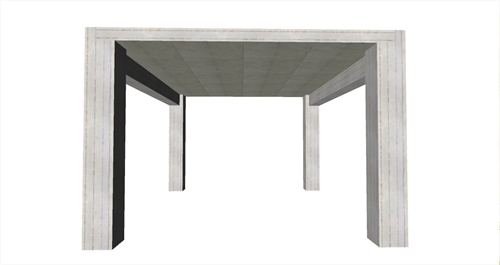 The structural frame consists of four columns, two beams and one slab "project: slabs10 "
The structural frame consists of four columns, two beams and one slab "project: slabs10 " The structural frame consists of four columns, two beams and one slab "project: slabs10 "
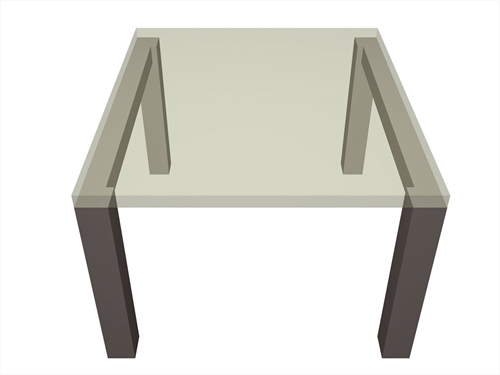 The one-way slab is supported by two beams.
The one-way slab is supported by two beams. The one-way slab is supported by two beams.
The example regards slab S1 which is 180 mm thick, its primary dimension is equal to 0.30+3.80+0.30=4.40 m and its secondary dimension to 5.0 m. The slab sits upon beams b1 and b2 which are supported by column pairs C2, C4 and C1, C3 respectively.
Usually, when a slab sits upon a beam the support is considered to be pinned.
 The carpenter’s formwork drawing regards the formation of the slab’s moulds
The carpenter’s formwork drawing regards the formation of the slab’s moulds The carpenter’s formwork drawing regards the formation of the slab’s moulds
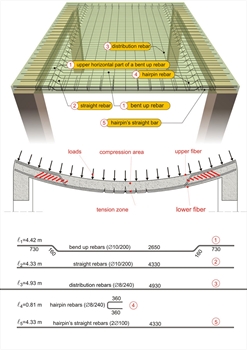 Behavior and reinforcement of one-way slab
Behavior and reinforcement of one-way slab Behavior and reinforcement of one-way slab
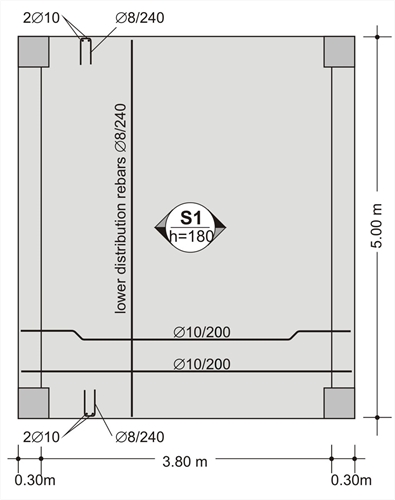 The installer’s formwork drawing regards the slab’s reinforcement
The installer’s formwork drawing regards the slab’s reinforcement The installer’s formwork drawing regards the slab’s reinforcement
The slab of the above example has four types of reinforcement:
1st) primary reinforcement
2nd) secondary reinforcement or distribution reinforcement
3rd) free edge reinforcement
The free edges of slabs are more susceptible to stresses and therefore, hairpin reinforcement is placed in these areas. Its proper position is secured by means of two bars placed inside its corners.
Hairpin reinforcement is easily formed by a folded wire mesh (see and paragraph 2.6.1).
4th) support reinforcement
The minimum required reinforcement in the support areas is provided by two ways:
1st way: Half the span rebars i.e. Ø 10/200 are shaped with bends at their ends (in every two bars one is straight and one is bend-up). The other half span rebars are formed with a straight length. That way has been followed in this specific example.
2nd way: All span rebars i.e. Ø 10/100 are manufactured and implemented with a straight length while in the upper part of the support areas additional straight rebars are placed.
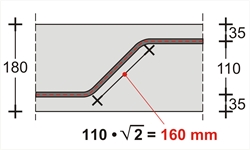 Calculation of the bent-up part of a rebar If the slab’s thickness is 180 mm, then the bent-up part will have a length equal to: (180-35-35)*√2= 110*1.4=160 mm
Calculation of the bent-up part of a rebar If the slab’s thickness is 180 mm, then the bent-up part will have a length equal to: (180-35-35)*√2= 110*1.4=160 mm Calculation of the bent-up part of a rebar If the slab’s thickness is 180 mm, then the bent-up part will have a length equal to: (180-35-35)*√2= 110*1.4=160 mm
For an effortless and economical implementation, when using straight-length rebars it is obliga-tory to use industrial wire fabric reinforcement as shown in the following figure.
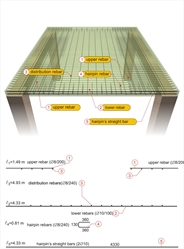 Reinforcing the one-way slab of the above example by means of straight-length bars "project: slabs15"
Reinforcing the one-way slab of the above example by means of straight-length bars "project: slabs15" Reinforcing the one-way slab of the above example by means of straight-length bars "project: slabs15"
In case a slab is reinforced only with straight-length bars which, as a rule, means reinforcement with wire fabrics, the installer’s formwork drawing is shown in the image below.
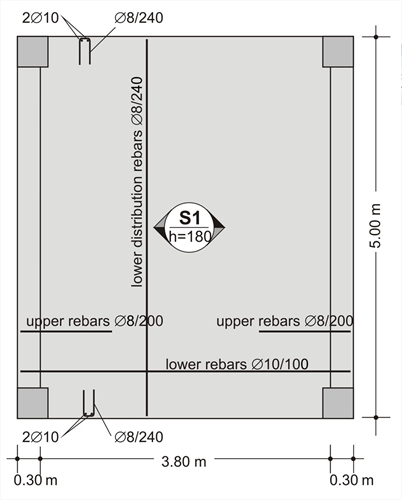 The installer’s formwork drawing of a one-way slab, reinforced with straight-length bars
The installer’s formwork drawing of a one-way slab, reinforced with straight-length bars The installer’s formwork drawing of a one-way slab, reinforced with straight-length bars